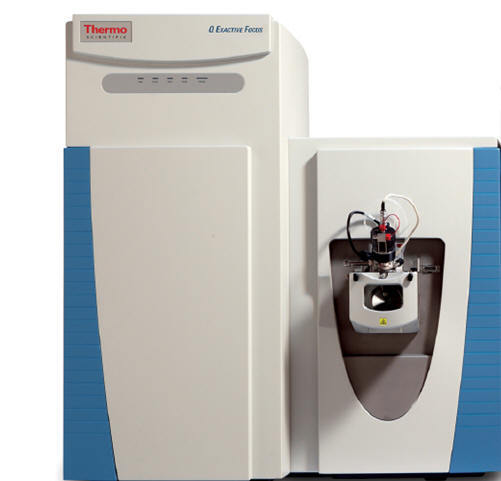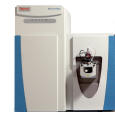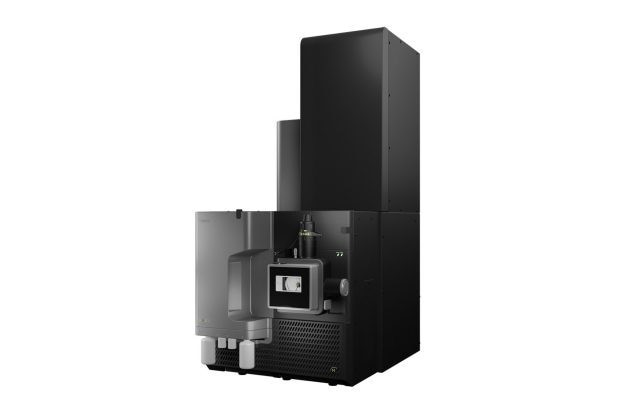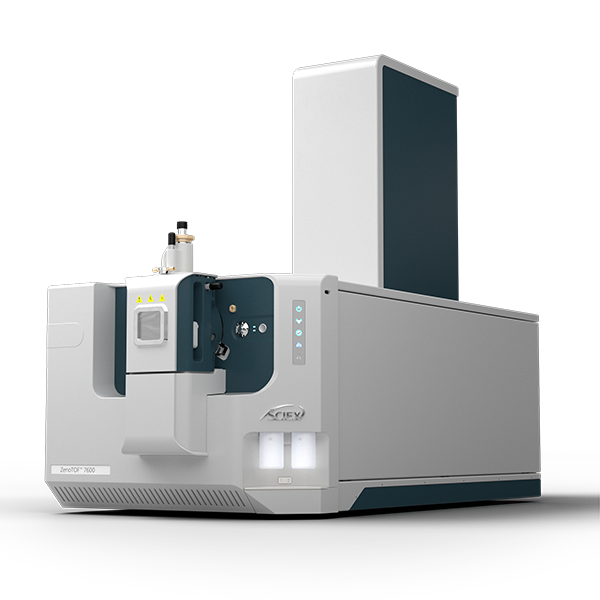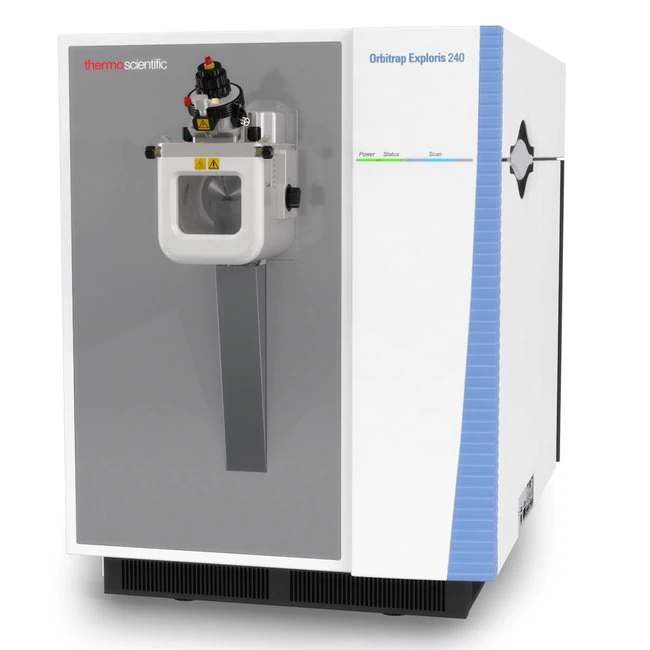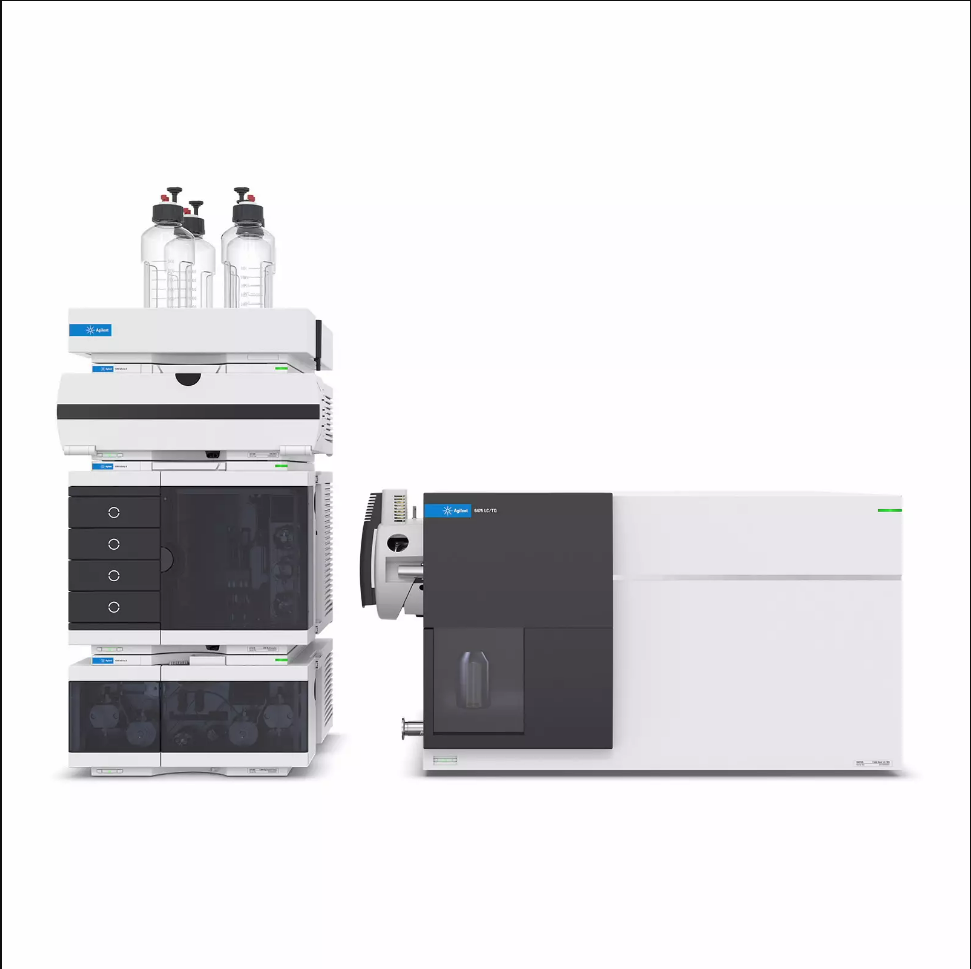方案详情
文
Metabolic profiling and structural elucidation of possible
metabolites via LC/MS/MS was simplified and accelerated
by Fragment Ion Search (FISh) processing in Mass Frontier
7.0 software. This workflow can be combined with
Multiple Mass Defect Filtering (MMDF) in MetWorks 1.3
software for reduced processing times without incurring
false negatives. The availability of high-resolution,
accurate mass LC/MS/MS data minimizes the possibility of
false positives in the generated list of related components.
All known metabolites of ticlopidine in a S9 human liver
fraction incubation were detected and identified using this
automated processing workflow, including the unusual
S-oxide dimer metabolite. This is interesting to note
because FISh was able to provide an indication for the
presence of this metabolite just through the identification
of an in-source fragment.
方案详情

AN63435E08/16SSCIENTIFI CPart of Thermo Fisher Scientific High-Resolution, Accurate Mass Measurementsand Metabolite Identification: An AutomatedApproach Using Fragment Prediction inCombination with Fragment Ion Search (FISh) Janine Wank, Winfried Wagner-Redeker, Anthony Taylor, Rose Herbold,Paul-Gerhard Lassahn' Introduction Structural elucidation of putative metabolites viaLC/MS is a time consuming process of manualinterpretation of MS" data and requires a strongbackground in metabolism pathways as well as gas-phasefragmentation pathways. To evaluate an automatedsoftware workflow for metabolite identification andstructural elucidation, we processed high-resolution,accurate mass data using the Fragment Ion Search(FISh)TM processing tool in Thermo Scientific MassFrontier 7.0 software. Data-dependent MS" data wasused for component detection and for the identification ofmetabolites based on theoretically calculated fragments ofthe parent structure. Goal To evaluate an automated workflow for metabolicprofiling and structural elucidation by using Fragment IonSearch (FISh) processing in Mass FrontierTM 7.0 software. Experimental Conditions Sample Preparation The investigated metabolites were derived from ticlopidine,a potent thienopyridine antiplatelet drug known to beextensively metabolized. Ticlopidine was incubated withhuman liver S9 enzymes. The final experimental concen-trations in the 1 mL incubation mixture were 100 mMKPO(pH7.4), 3 mM NADPH, 3.8 pM ticlopidine, andS9 human liver fraction (BD Bioscience). After the additionof S9 human liver fraction, the incubation mixtures werehomogenized gently and placed into a water bath (37°C).Aliquots of the reaction solution were withdrawn after.0, 30, and 60 minutes, and the reaction was quenched bythe addition of acetonitrile. The individual samples werecentrifuged and analyzed by LC/MS. Liquid Chromatography Separations were performed using a Thermo ScientificHypersil GOLD column (50 x2.1 mm, 1.9 um particlesize) with a Thermo Scientific Accela 600 pump anda Thermo Scientific Open Accela autosampler. Thechromatographic conditions were as follows: Mobile phase A: Water with 0.1% formic acid Mobile phase B: Acetonitrile with 0.1% formic acid Flow rate: 150 pL/min Gradient: Time (min) %A %B 0.0 90 10 2.0 90 10 16.0 50 50 18.0 5 95 23.0 5 95 23.1 90 10 28.0 90 10 Mass Spectrometry MS analysis was carried out with a Thermo ScientificLTQ Orbitrap XL hybrid mass spectrometer in positiveion mode using one high-resolution full MS scan followedby three high-resolution MS’ scans. Precursor selectionwas done in the data-dependent operation mode wherethe most intense ion of the previous scan was selected forfragmentation. The MS conditions were as follows: MS resolution: 60,000 FWHM at m/z 400 MS?resolution: 7,500 FWHM at m/z 400 Full MS mass range (m/z). 150-800 Collision Energy: CID: 35% In additional experiments, an inclusion list containingthe calculated exact masses of putative metabolites wasadded to the method (Figure1). dependent MS/MS mode) was directly exported to theMass Frontier 7.0 software program. After the automatedremoval of noise and baseline signals, the theoretical Figure 1. Schematic workflow of the automated data processing for metabolite identification calculation of possible fragmentsof ticlopidine was performed. (SeeFigure 1 for the schematic workflowand Figure 4 for the annotation of allmajor peaks in the MS/MS spectraof ticlopidine.) Next, a general list ofpossible Phase I biotransformationswas applied, and the LC/MSchromatogram was processed by acomponent detection algorithm. FIShwas then used to screen the detectedcomponents and the correspondingspectral ion trees to identify putativemetabolites of ticlopidine. The workflow and FISh dataprocessing results are summarizedand illustrated in Figure 5.After the determination of thetheoretical fragments of ticlopidineand specification of the Phase l Data Analysis Raw data was processed using Mass Frontier 7.0 software,including the Chromatogram Processor and DatabaseManager modules. The Fragments and Mechanisms, FIShFISh Explanation, and Compare Spectra processing toolswere used. Multiple Mass Defect Filtering was completedby using Thermo Scientific Met Works 1.3 software. Results and Discussion The structures of ticlopidine and its known metabolites'are highlighted in Figure 2. The extracted ion chromato-grams of these metabolites (0 min versus 30 min S9 liverfraction incubation; mass accuracy 5 ppm) are displayedand annotated in Figure 3. The high resolution accurate mass data (data- modifications, component detection and FISh processingwere used to screen for putative metabolites. The list ofpredicted fragments was automatically extended by themass shifts of the modifications through the definition ofthe expected biotransformations of ticlopidine. The list and.the combined ion chromatograms of putative metabolitesare displayed after this process. FISh provided anexplanation of the MS/MS data including the structures ofthe fragments and the possible modifications (highlightedin red in Figure 5) for each detected component. For themetabolites M1 and M5, the modifications were furtherconfirmed by a comparison between the observed andtheoretical fragments of the putative structures of themetabolites. All fragment ions were explained. Figure 3. Extracted ion chromatograms of ticlopidine and its known metabolites M1-M6 (mass accuracy 5 ppm, retention-time 1.0-14.0 min) SM:7G NL: 1.65E6 Time (min) Figure 4. Extracted ion chromatograms of the ticlopidine metabolites M1-M6 and of the fragment m/z125.0153 (C,H Cl, mass accuracy 5 ppm, incubationtime 30 min) Annotation of the MS/MS spectrum of M1 Annotation of the MS/MS spectrum of M5 with predicted fragments with predicted fragments ( Figure 5. E xplanation of the automated approach for met a bolite iden t ification using fragment prediction in co m b i nation with Fragment lon Search (FISh) ) The results of the FISh processing and a comparisonbetween expected and detected metabolites are displayedin Table 1. All known metabolites, including the unusualS-oxide dimer metabolite M6, were detected and identifiedby the automated FISh processing approach of the originalraw data file. The unusual S-oxide dimer metabolite M6was detected by FISh through the identification of an in-source fragment (Figure 6). Table 1. Summary of the Fragment lon Search (FISh) processing results Metabolite FISh defect filtered data M1 √ √ M2 √ √ M3 √ √ M4 √ M5 √ √ M6* √ *M6 was detected through the identification of an in-source fragment m/z Figure 6. Co-elution of the metabolites M3/M4 and the benefit of high-resolution, accurate mass data Conclusion In addition to theseMetabolic profiling and structural elucidation of possible offices, Thermo Fishermetabolites via LC/MS/MS was simplified and accelerated Scientific maintainsby Fragment Ion Search (FISh) processing in Mass Frontier a network of represen-7.0 software. This workflow can be combined with tative organizationsMultiple Mass Defect Filtering (MMDF) in Met Works 1.3 throughout the world.software for reduced processing times without incurringfalse negatives. The availability of high-resolution,accurate mass LC/MS/MS data minimizes the possibility offalse positives in the generated list of related components.All known metabolites of ticlopidine in a S9 human liverfraction incubation were detected and identified using thisautomated processing workflow, including the unusualS-oxide dimer metabolite. This is interesting to notebecause FISh was able to provide an indication for thepresence of this metabolite just through the identificationof an in-source fragment. Africa-Other +27 11 570 1840 Australia +6139757 4300 Austria +43 1 333 50 34 0 Belgium +32 53 73 42 41 Canada +1 800 530 8447 1. Talakad, J.C.; Shah, M.B.; Walker, G. S.; Xiang,C.; Halpert, J.R.;Dalvie, D. Comparison of In Vitro Metabolism of Ticlopidine by HumanCytochrome P450 2B6 and Rabbit Cytochrome P450 2B4 Drug Metab.Dispos. 2011,39(3),539-550. +86 10 8419 3588 Denmark +45 70 23 62 60 Europe-Other +431333 50340 2. Huang, Y.; Liu, S.; Miao, S.; Jeanville, P.M. Using Multiple Mass DefectFilters and Higher Energy Collisional Dissociation on an LTO OrbitrapXL for Fast, Sensitive and Accurate Metabolite ID; Thermo FisherScientific Application Note 417,2008. Finland/Norway/ Sweden +46 8 556468 00 France +33160924800 Germany +49 6103 408 1014 India +91 2267429434 Italy +39 02 950 591 Japan +81 45 453 9100 Latin America +15616888700 Middle East +43 1 333 50 340 Netherlands +31 76 579 55 55 New Zealand +64 99806700 Russia/CIS+43 1 333 50 340South Africa+27 11 570 1840Spain+34 914 845 965Switzerland+41 617167700UK+44 1442233555USA+18005324752 www.thermofisher.com ( L egal Notices: @2016 T h ermo Fi s her Scientific I nc. All rights reserved. Mass Frontie r and Fragment Ion Search (FISh) are trademarks of HighChem, Ltd. All o t her trademarks are the property of Thermo Fish e r Scientific and its subsidiaries. Th i s information is presented as an example of the capab i lities of Thermo Fisher Scien-tific In c . products . It is not intended to encourage use of these products i n any manners that might infringe the in t ellectual property rights of others. S p ecif i cations,terms and pr i cing are subject to change. Not a ll products are available in all co u ntries. Please consult your lo c al sales representative for details. ) Thermo Structural elucidation of putative metabolites via LC/MS is a time consuming process of manual interpretation of MSn data and requires a strong background in metabolism pathways as well as gas-phase fragmentation pathways. To evaluate an automated software workflow for metabolite identification and structural elucidation, we processed high-resolution, accurate mass data using the Fragment Ion Search (FISh)™ processing tool in Thermo Scientific Mass Frontier 7.0 software. Data-dependent MSn data was used for component detection and for the identification of metabolites based on theoretically calculated fragments of the parent structure. To evaluate an automated workflow for metabolic profiling and structural elucidation by using Fragment Ion Search (FISh) processing in Mass Frontier™ 7.0 software.Metabolic profiling and structural elucidation of possible metabolites via LC/MS/MS was simplified and accelerated by Fragment Ion Search (FISh) processing in Mass Frontier 7.0 software. This workflow can be combined with Multiple Mass Defect Filtering (MMDF) in MetWorks 1.3 software for reduced processing times without incurring false negatives. The availability of high-resolution, accurate mass LC/MS/MS data minimizes the possibility of false positives in the generated list of related components. All known metabolites of ticlopidine in a S9 human liver fraction incubation were detected and identified using this automated processing workflow, including the unusual S-oxide dimer metabolite. This is interesting to notebecause FISh was able to provide an indication for thepresence of this metabolite just through the identificationof an in-source fragment.
确定
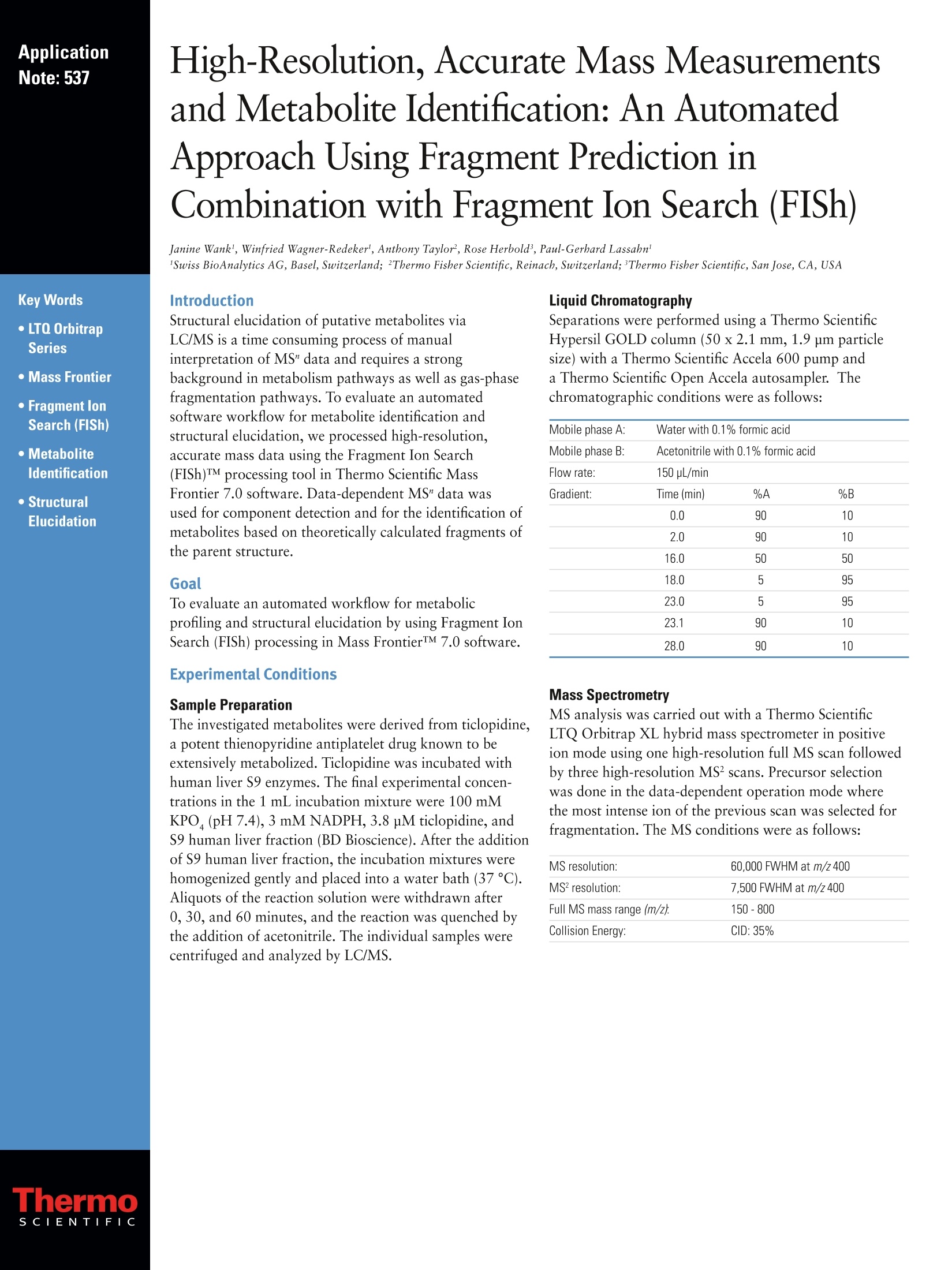
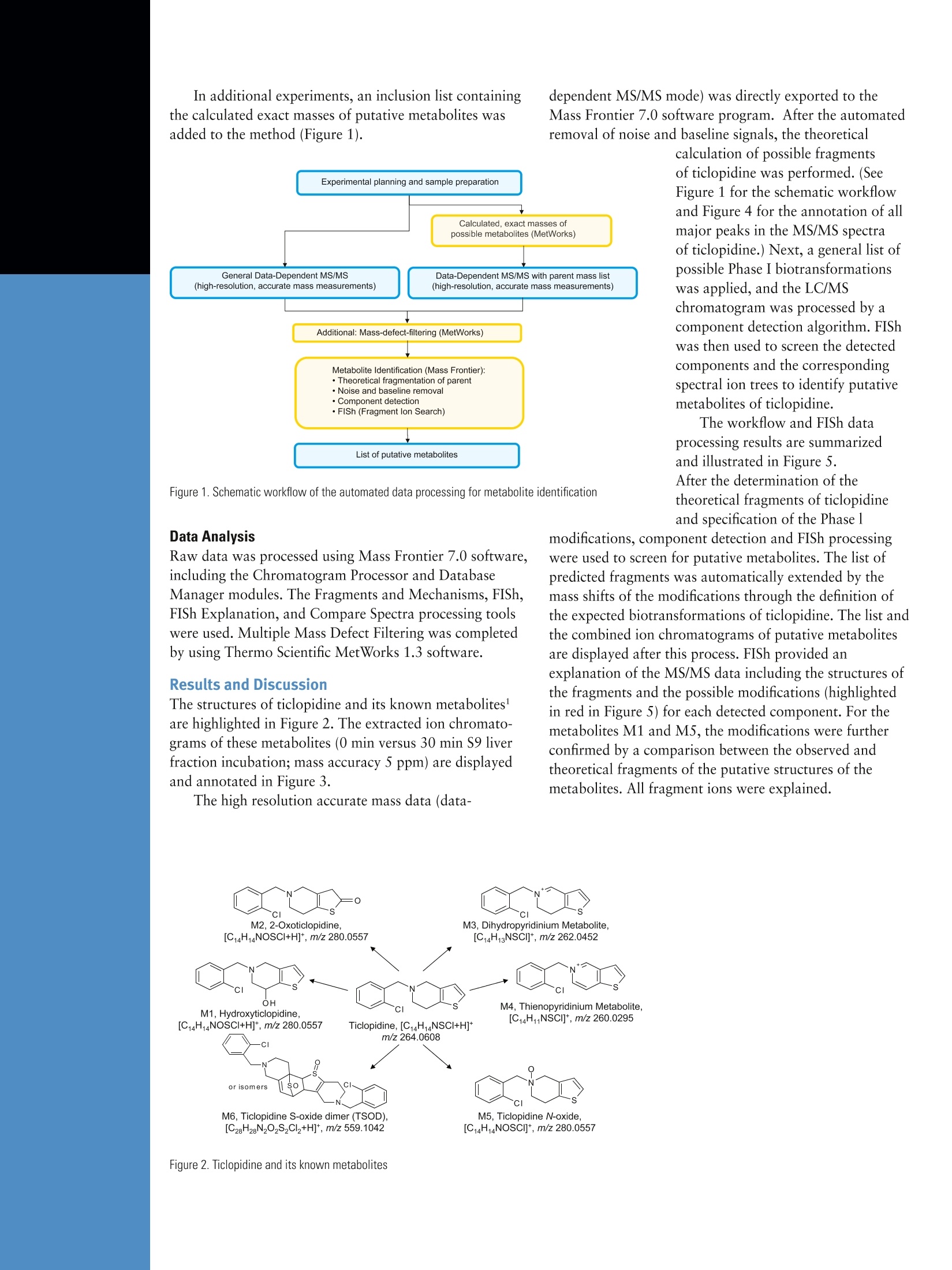




还剩4页未读,是否继续阅读?
赛默飞色谱与质谱为您提供《代谢物中碎片预测与碎片离子检索检测方案(液质联用仪)》,该方案主要用于其他中碎片预测与碎片离子检索检测,参考标准--,《代谢物中碎片预测与碎片离子检索检测方案(液质联用仪)》用到的仪器有赛默飞Q Exactive Focus LCMSMS 系统
推荐专场
相关方案
更多
该厂商其他方案
更多

